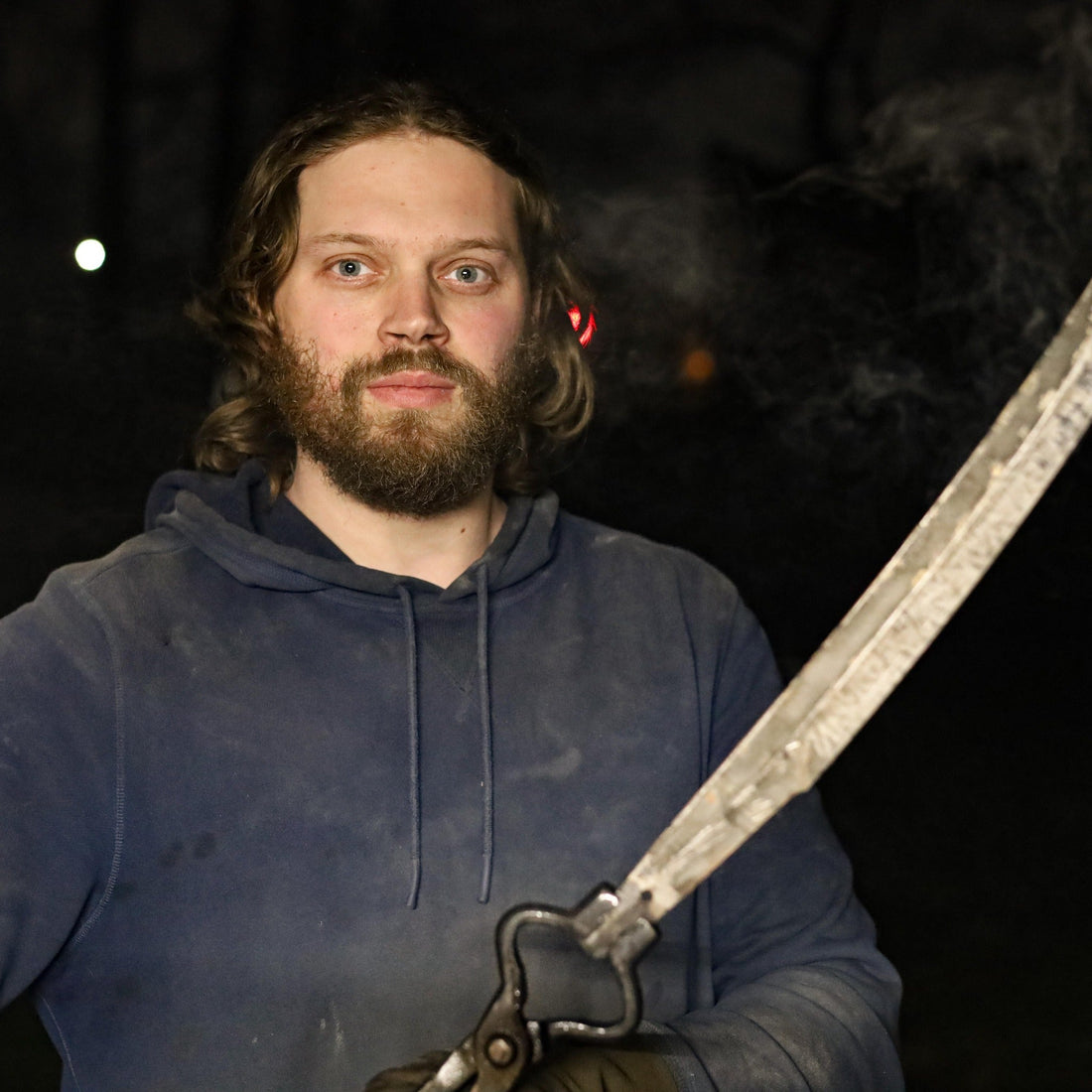
July Maker of the Month Interview with Joshua Fisher
ozzie mendozaShare
July Maker of the Month Interview with Joshua Fisher
For this month's blog entry, Ozzie sat down for an interview with Joshua Fisher, the skilled craftsman behind Edge Knife Works. Joshua is an American knife maker based in Northern Kentucky, celebrated for his victory on Season 8 of Forged in Fire. Operating from his home workshop, he handcrafts very reasonably priced, high-performance kitchen and utility knives using premium steels. You can see more of Joshua's work here.
(The following excerpt has been adjusted for brevity.)
OM: How did your background prior to blade smithing influence your transition to full-time knife making, and what specific skills do you think it helped bring to crafting high-performance knives at Edge Knife Works?
JF: When I started knife making I worked in construction and carpentry and came from a background of using tools like chisels and knives in day to day work. I started off making small outdoor knives then quickly transitioned to an interest in culinary knives because chef knives are some of the most used knives on a daily basis. That really resonated with me that I could make tools that someone else would use for cooking a meal for their family or in a restaurant for customers and reminded me of the feeling of joy I’d have when using good tools when building furniture or a house. Because I didn’t have a culinary background I spent a lot of time learning about different types of kitchen knives, how they needed to function and what details were important to the finished knife. I made sure to listen to feedback from chefs and professionals using the knives and continued to develop a style based off of that feedback and constant research to make sure each blade would function properly and be comfortable to use.
OM: As a self-taught knife maker, how do you continuously refine your skills, and what resources or techniques have been most valuable in perfecting the meticulous care you put into each blade?
JF: Being a self taught maker I am constantly researching new materials, techniques, and communicating with customers to improve my knives. I also frequently talk to other makers and learn different processes or approaches to the craft. I try to keep the mindset of constant small improvements with each batch of knives. The most valuable resource I would say is listening to those willing to give advice, even if I find I don’t prefer another makers style or process you can always learn something and having an open mind and willingness to learn has led to some very important lessons and conversations that have helped shape my knives to what they are today.
OM: Your knives develop distinctive patinas over time, adding character. How do you educate customers about caring for these blades, and why do you think this feature appeals to small business owners like sharpeners at farmers' markets?
JF: On my carbon steel knives you get a variety of patinas depending on what you are using the knife for. This is unique to carbon steels and while they have more maintenance to prevent rust the patina tells a story and history of the knife and user. Cutting mostly proteins will develop purple and blue colors on the blade while vegetables will often develop a patina with more yellows and browns. A patina is a safe layer of oxidation that forms and helps protect the knife from rusting, all patinas over long periods will turn darker and gray and at that point are a sign of a well used and maintained knife. It is important with carbon steel knives to wash and dry thoroughly after use to prevent rust, but we all forget from time to time and rust if caught quickly can easily be removed with barkeepers friend or a rust eraser for more stubborn spots. This attention to care typically helps build good habits or maintaining all of your knives so they last for generations.
OM: Winning Season 8 of Forged in Fire was a defining moment. How did that experience shape your approach to knife making, and what lessons from the competition do you apply to your work in your Northern Kentucky workshop?
JF: Forged in Fire was an early influence that got me started making knives as a hobby so being able to compete and win my episode in season 8 was a very special experience. It has led to many connections with other makers in the industry and quite a few close friendships. At the time winning an episode allowed me to really start upgrading some equipment in my shop, it let me invest in a really good heat treating setup to make sure each knife would be consistently and properly hardened. This has allowed me to work with a variety of steels from simple carbon steels, shallow hardening steels with hamons, to more intricate carbon and stainless steels. It also let me invest in a small forging press that lets me occasionally make my own pattern welded steels like Damascus or San mai.
OM: Love it. You use premium carbon steels like 8670 and ApexUltra. What drew you to these materials, and how do they enhance the performance and durability of your kitchen and utility knives for customers like chefs or farmers' market vendors?
JF: 8670, Apex Ultra, Nitro-v, and soon Procut are some of the steels I’ve chosen to work with in my main production for a variety of reasons. Ultimately the steels I choose are with the customer in mind, the carbon and stainless steels I prefer have a good balance of toughness to edge holding to support thin geometry on a kitchen knife. Currently majority of my production is with nitro-v, it’s a simple stainless steel that takes a good edge and is easy to sharpen for the end user. I’m also starting to work with a new carbon steel called Procut that was recently introduced to the market and testing to see if I want to start using it more in my standard production. In my experience with kitchen knives you want steels that are quick to sharpen and maintain a keen edge, it’s very common to routinely touch up an edge with a ceramic honing rod or strop during use and this helps ensure that if a chef is using a knife and needs to touch up mid shift or task they can quickly do so versus steels that have significant wear resistance and may require more abrasive approaches to get the edge back quickly.
OM: For small business owners or hobbyists, like those at farmers' markets who might be interested in knife making or selling, what advice would you give based on your journey from chef to celebrated knife maker?
JF: My advice for new makers is to always keep an open mind, find other makers and chefs that you can work with and learn from. Focus on learning the craft and making better knives with each batch and eventually the business will grow. I’ve taken the approach of partnering with established stores and vendors and worked closely with those dealers to build good long lasting relationships to grow my business and reach new customers. The last bit of advice I would have is always take care of the customer, the more knives you produce the more likely you’ll have an issue that needs to be fixed or accident that happens and regardless of the circumstance I always prioritize the customer.
